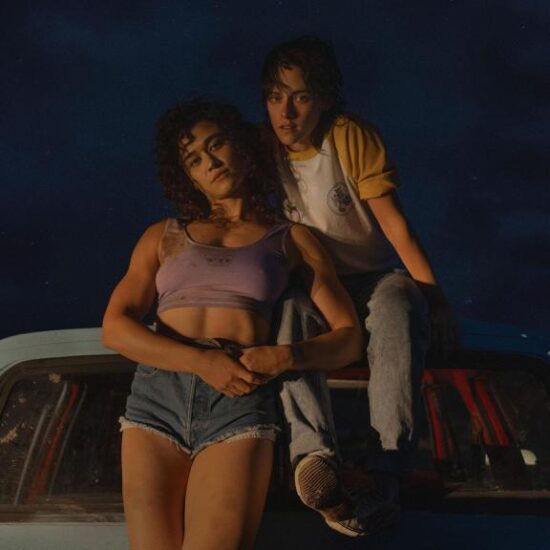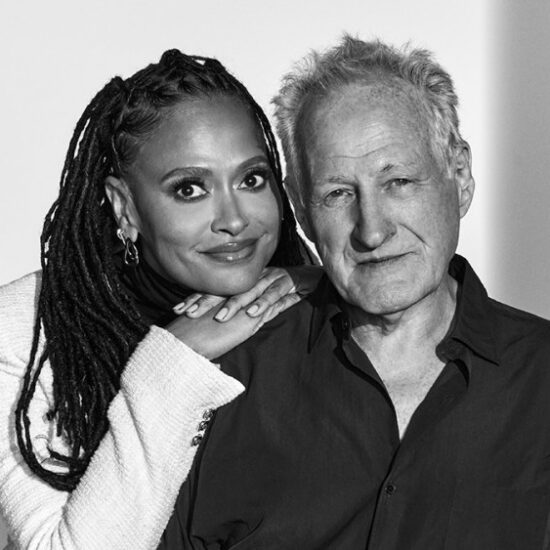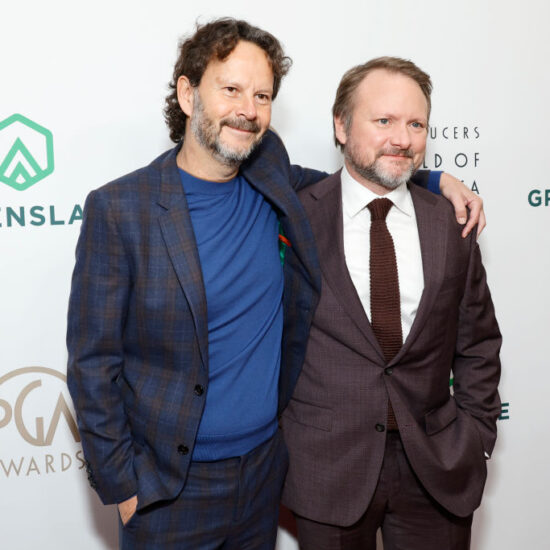
The world of “Daisy Jones and the Six” may be a gorgeously textured heightened reality, but it firmly exists in the very real iconic venues of Los Angeles. As the Prime Video series’ Emmy-nominated craft team consisting of executive producer Lauren Levy Neustadter, costume designer Denise Wingate, makeup artist Rebecca Wachtel, re-recording mixer Lindsay Alvarez, music supervisor Frankie Pine, and production designer Jessica Kender exclusively told IndieWire’s awards editor Marcus Jones, staying true to both Taylor Jenkins Reid’s bestselling novel and the lushness of L.A. itself was key to bringing the rock ‘n roll saga to life.
During an IndieWire Consider This conversation in the video above, “Daisy Jones and the Six” executive producer Lauren Levy Neustadter revealed that the Hello Sunshine-produced series was more than five years in the making, with Riley Keough starring as the titular crooner opposite Sam Claflin’s co-lead rocker Billy Dunne. Neustadter credited how clear author Reid’s vision was for the series, with the adaptation setting out to be authentic to both the book and the era itself. The show is Emmy-nominated for Best Limited Series, among other accolades.
The fashion-forward costumes crafted by designer Denise Wingate were the foundation of the world-building, per Neustadter. Wingate created inspiration boards featuring different rock stars of the era to emulate in each outfit onscreen. Of course, it helped that Wingate had already been dreaming up what Daisy and Billy Dunne’s ensembles would look like prior to even being attached to the show.
“I was very protective of the book and also of the fans,” Wingate said. “I think Taylor did such a great job of describing certain costumes in the book that I felt we would be letting the fans down…I knew I would be let down if I was watching the show and there were certain specific things I was expecting and didn’t get to see.”
Wingate watched documentaries about the ’70s to ground each look, especially Daisy’s onstage outfits, in a very specific time capsule. Coupled with makeup artist Rebecca Wachtel’s vision for Daisy’s look, the character became a full-fledged icon.
“I would say we were putting her ‘war paint’ on whenever we were doing her show looks,” Wachtel said of working with actress Keough. “Riley was game for all of it and any of it. She loved to delve into the character.”
The costumes also inspired production designer Jessica Kender’s layered approach to the sets, which also included filming at real music venues throughout Los Angeles.
“It’s a love letter to L.A.,” she said. “When you have such classic locations and places where this stuff was created, you don’t need to change that. All you need to do is bring it back to the ’70s. You don’t want to make it something it’s not, you just want to make it period correct.”
Reconstructing the stadium Soldier Field for a massive Daisy Jones and the Six concert led to the nuanced elements of sound design to create more intimate moments backstage between Daisy and Billy in one of the climactic sequences of the series.
“Sound is one of your cheapest forms of production design,” Lindsay Alvarez, series re-recording mixer, said. “It was so fun to be like, ‘Oh right I’m at a concert now, let’s put us in the mix.’ It was fun to treat that just by each club setting that you’re in.”
Music supervisor Frankie Pine set out to have the cast look as effortless onstage as musicians, saying, “My goal was to make sure that they never looked like they didn’t know what they were doing. All they had to do when they got up there was play the music, not look at their hands, and act.”
And while “Daisy Jones and the Six” featured critically acclaimed original songs, Pine revealed that some real-life artists were hesitant to be included on the soundtrack.

“I did a total song and dance with Led Zeppelin’s people. We had it cut to picture, it looked great,” Pine said of using a track for a hotel room party scene. “We showed them the scene, and they denied us. At some point I was like, ‘Is anybody in the ’70s, because of all the drugs, are they going to say yes to this?’ But I kept thinking, ‘They were all doing drugs in the ’70s, why do they have a problem with this?!’”
She continued, “We ended up with ‘In the City’ by The Jam, which worked so perfectly that I had even forgotten that we wanted [something else],” adding that the scene was the “most difficult but also the most rewarding” out of the whole series.
Yet the grounding emotional elements of “Daisy Jones and the Six” emerged in the final episode reveal with Camila Morrone’s character Cami, as the time jump dual storylines brought a fatal end for her beloved matriarch.
“It was that fine line of, ‘She’s sick but you don’t want it to be distracting, and she still looks good,’” makeup artist Wachtel said.
Executive producer Neustadter added, “The work that [Rebecca] did on Cami was so important and it was so intentional. I do think one of the most gratifying things for all of us is the emotional reaction people have when they watch the show, and so much of that has to do with that final episode and what is revealed there. That came down to Rebecca’s work, that was so carefully rendered.”
As costume designer Wingate said, the show “was this handshake of collaboration that you don’t often have,” concluding, “This really was like the World Cup of production.”
IndieWire’s Consider This Conversations bring together the cast and creative team members of television’s most prestigious shows to discuss some of the best art and craft of TV production of 2023.














